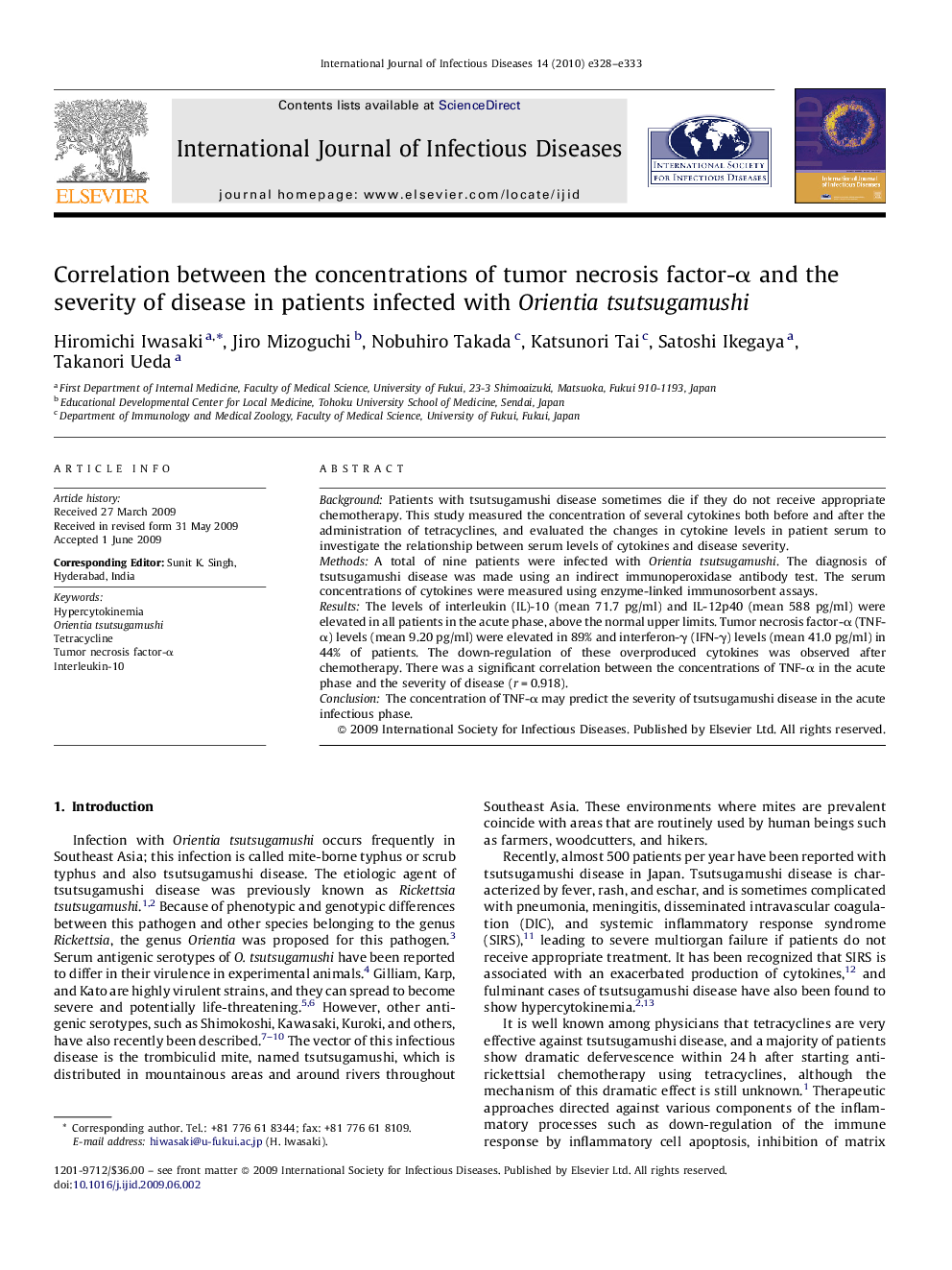| Article ID | Journal | Published Year | Pages | File Type |
|---|---|---|---|---|
| 3363988 | International Journal of Infectious Diseases | 2010 | 6 Pages |
BackgroundPatients with tsutsugamushi disease sometimes die if they do not receive appropriate chemotherapy. This study measured the concentration of several cytokines both before and after the administration of tetracyclines, and evaluated the changes in cytokine levels in patient serum to investigate the relationship between serum levels of cytokines and disease severity.MethodsA total of nine patients were infected with Orientia tsutsugamushi. The diagnosis of tsutsugamushi disease was made using an indirect immunoperoxidase antibody test. The serum concentrations of cytokines were measured using enzyme-linked immunosorbent assays.ResultsThe levels of interleukin (IL)-10 (mean 71.7 pg/ml) and IL-12p40 (mean 588 pg/ml) were elevated in all patients in the acute phase, above the normal upper limits. Tumor necrosis factor-α (TNF-α) levels (mean 9.20 pg/ml) were elevated in 89% and interferon-γ (IFN-γ) levels (mean 41.0 pg/ml) in 44% of patients. The down-regulation of these overproduced cytokines was observed after chemotherapy. There was a significant correlation between the concentrations of TNF-α in the acute phase and the severity of disease (r = 0.918).ConclusionThe concentration of TNF-α may predict the severity of tsutsugamushi disease in the acute infectious phase.
